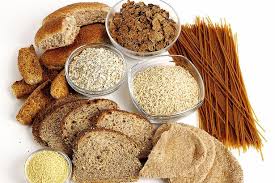Have you noticed how trends change when it comes to dietary advice? In the 80s, eating fibre was the be-all and the end-all. What’s happened to the famous F-word in the 21st century? Do we longer need fibre? Have the halcyon days of All Bran and the F-plan diet gone forever?
Today, the health pundits are so busy telling us about the dangers of obesity and threatening us with diabetes if we continue to max our meals, that fibre has become neglected. The F-plan diet is but a distant memory as we embrace modern-day diets like the 5:2.
The five a day campaign has been raging for over ten years now, which presumably was meant to solve the fibre problem in a trendy, buzz-word sort of way. But as we found out, that particular campaign has left us all confused, at best. Yet despite fibre being essential to our health and well-being, still there’s ne’er a mention of the trusty old F-word in the media.
This got me wondering why the fibre campaigns have vanished from the public eye. I decided to see if this is because we’re all fibred-up, or whether it’s because high fibre diets and their inevitable results are just not trendy any more. Is it non-PC to talk about fibre? Should I worry about people’s sensitivities if I dare to discuss digestive systems, bowel movements and flatulence?
In my quest for information, I found cricketer and Strictly Come Dancing winner Mark Ramprakash had his body painted showing all the internal organs in a bid to promote the benefits of fibre. That was in 2006, though, and I have to say it passed me by. Clearly he didn’t have Nina & Co handling his marketing and PR!
Mark’s campaign was in support of the Fibre Foundation’s bid to put fibre back on the agenda. They describe fibre it as the ‘original supernutrient’.
 Fibre, or roughage as it used to be called, is essential to our innermost workings and without it, we’d quickly be in need of an intestinal dyno-rod service. Lack of fibre leads to constipation and not only causes discomfort, it also has many associated health risks (not to mention being the butt of much lavatorial humour).
Fibre, or roughage as it used to be called, is essential to our innermost workings and without it, we’d quickly be in need of an intestinal dyno-rod service. Lack of fibre leads to constipation and not only causes discomfort, it also has many associated health risks (not to mention being the butt of much lavatorial humour).
In the 1980s we were all fibre-conscious and the F-plan diet was the toast of the day. Created by Audrey Eyton, the founder of Slimming Magazine, F-plan restricted the amount of calories to 1500 and combined this with eating more than the recommended amount of dietary fibre. A high fibre diet is reputed to help weight loss and that makes perfect sense to me. A high fibre meal passes through your system more quickly and efficiently – a sort of digestive Monopoly where the calories pass ‘Go’ but without adding the pounds along the way.
According to the NHS website, the majority of us are not eating enough fibre. As a result, we’re running the risk of problems like heart disease, diabetes, colon cancer and diverticulitis. Did you know having a high fibre diet can also help you feel happier and more energetic?
I think it’s about time the F-word came back into vogue. In fact, I’d like to start a ‘movement’ right now to give fibre the credit it deserves and start to build its street cred once again. Who will join me?
P.S. No apologies for the deliberate pun!

